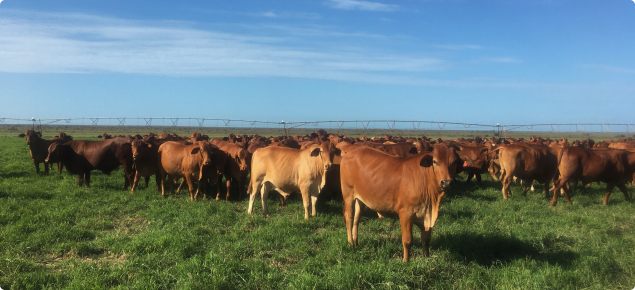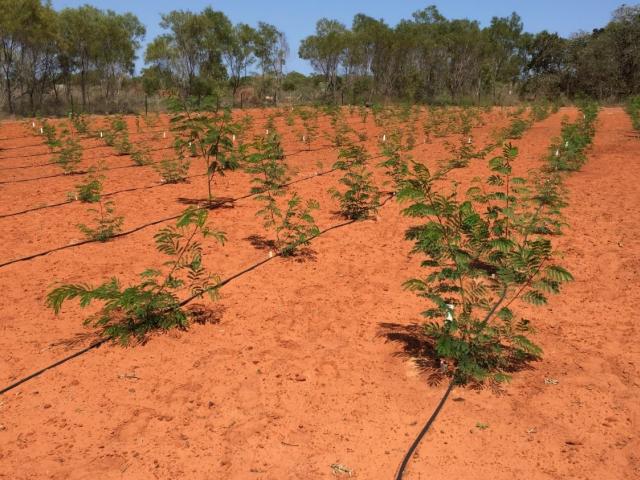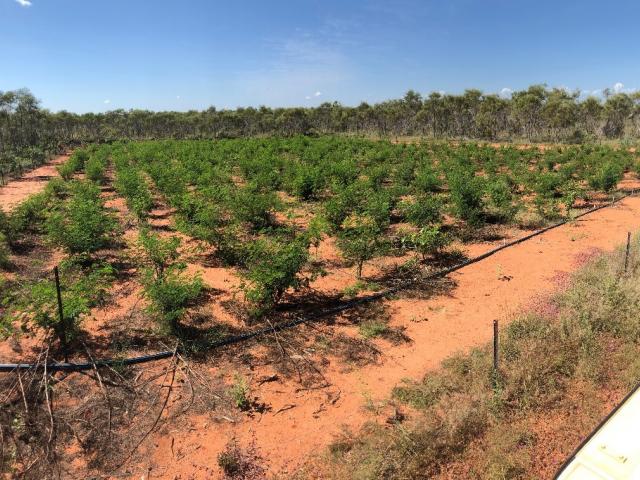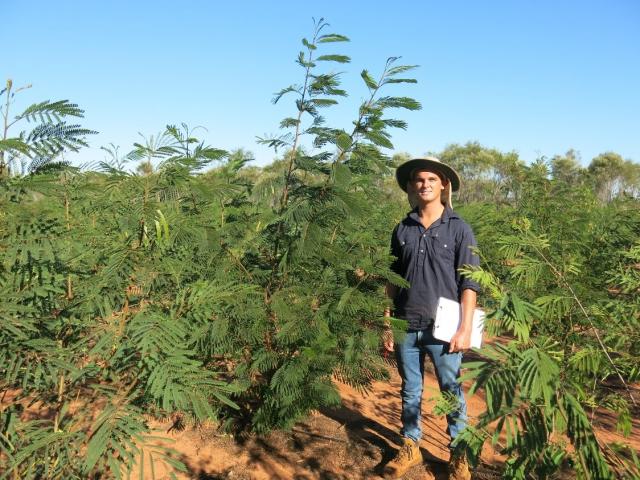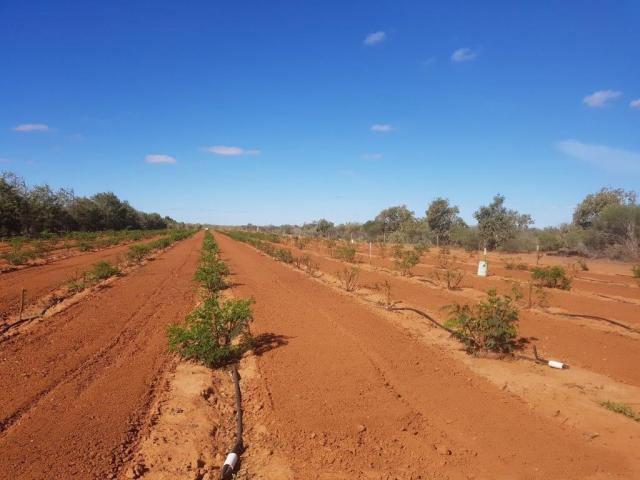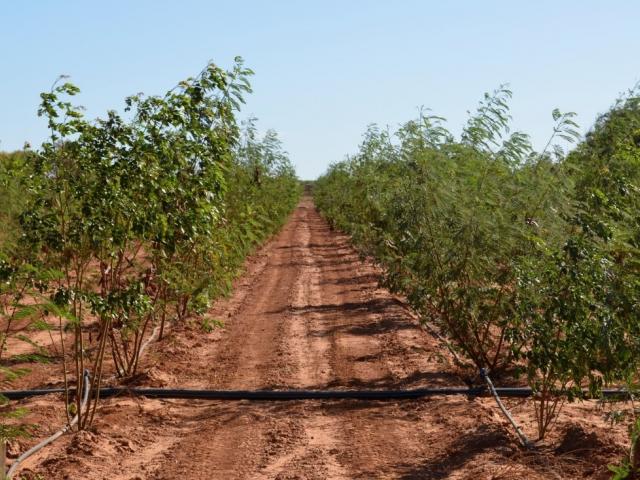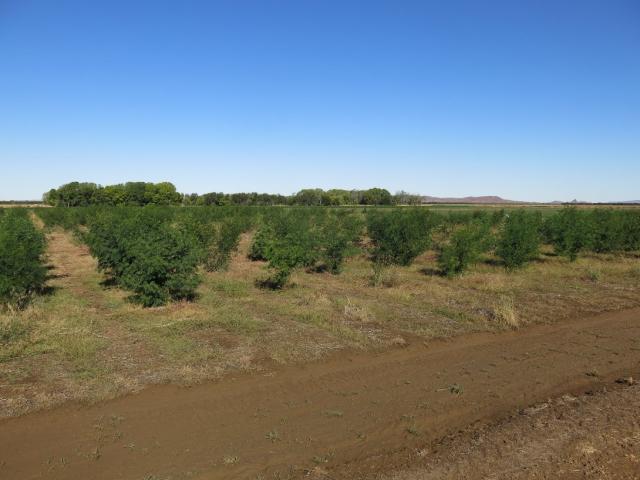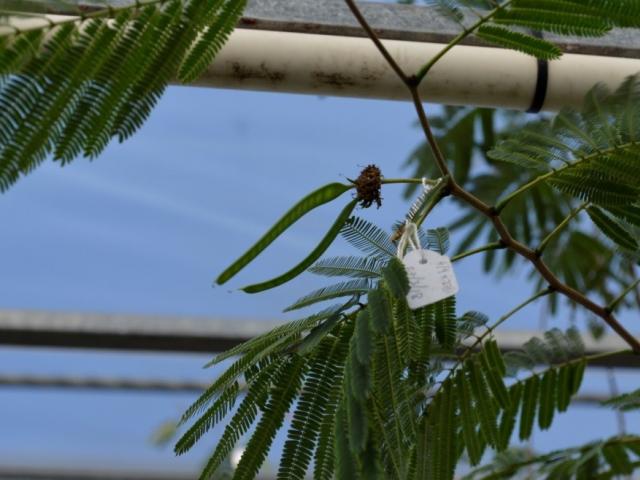The benefits of mosaic agriculture include:
- producing fodder for on-station use,
- providing a feed buffer against dry seasonal conditions, and
- targeting cattle to a broader range of markets outside traditional selling periods for forward selling or price premiums.
Mosaic agriculture bulletin
The Department of Primary Industries and Regional Development (DPIRD) has published a comprehensive guide – Mosaic Agriculture: A guide to irrigated crop and forage production in northern WA (Bulletin No. 4915) - on growing irrigated crops and pastures within a rangeland pastoral setting. The guide is specifically aimed at Western Australian pastoralists, agronomists, agribusiness and the broader community, but many of the principles and information are widely applicable across northern Australia.
This bulletin summarises the work undertaken in DPIRD’s mosaic agriculture project, which had a particular focus on quantifying the production potential and feed quality for a range of pasture, fodder and crop options. In addition, the publication includes contributions from a range of disciplines across DPIRD (climate, soils, regulatory, irrigation, pests and disease) as well as industry and research collaborators.
This research was funded through the department’s Northern Beef Development project, in partnership with the MLA Donor Company.
Bulletin contents
Introduction
Chapter 1
1.1 Farming system options
1.2 Economics of small-scale irrigation
1.3 Pre-feasibility and project approvals
1.4 Understanding the climate
1.5 Understanding the soils of the Kimberley and Pilbara
Chapter 2
2.1 Water requirements for irrigation
2.2 Irrigation management
2.3 Soil moisture monitoring
Chapter 3
3.1 Pasture and crop options – summary
3.2 Warm season annual grasses
3.3 Warm season perennial grasses
3.4 Tropical legumes
3.5 Temperate crops and pastures
3.6 Plant nutrition
3.7 Monitoring for pests and diseases
Chapter 4
4.1 A guide to animal nutrition and expected growth rates
4.2 Grazing Rhodes grass pastures
4.3 Understanding feed quality
Appendices
References
Click on the link to download the Mosaic Ag Bulletin No. 4915
Next focus areas
- DPIRD research pivot at Skuthorpe (north Broome) started in 2020. The focus is on:
- Monthly production and feed quality of a range of warm season perennial grasses
- Nitrogen balance of irrigated Rhodes grass pastures
- An annual cropping system with a maize variety trial over the 2021 dry season
- Refining weed risk assessments for non-indigenous species to inform policy
- Weed risk field nursery trials were established in four key environments to assess the environmental weed risk posed by non-indigenous agricultural plants.
- The feasibility of developing a sterile leucaena variety. Leucaena is a leguminous that provides high quality cattle feed, however it can also be an environmental weed in some situations.
Risk of agricultural plants becoming environmental weeds
The viability and sustainability of agricultural systems, including pastoral enterprises, may be improved by the introduction of non-indigenous (non-native or exotic) plant species. However there is clear evidence that throughout Australia, some introduced non-indigenous species have established in non-target areas and have become environmental weeds. As a result, there is concern amongst the community that agricultural plants grown for irrigated or dryland fodder and pasture may become environmental weeds.
To directly address this issue, a series of field trials were established in the West Kimberley and Pilbara to evaluate the persistence and/or spread of a wide range of agricultural species. The results of these trials will inform policy on balancing agricultural potential with environmental risks. Since most of northern WA is under pastoral lease, a diversification permit from the Pastoral Lands Board (PLB) is required to grow non-indigenous species.
Methodology
A focus of DPIRD’s Northern Beef Development project is to inform weed risk policy settings and strengthen the weed risk assessment process. Prior to this research, the weed risk assessments were based on a desk-top analysis as there was little or no data on many of the agricultural species in the Pilbara and Kimberley.
The research project collected field data from a series of ‘weed risk’ field nurseries in four key environments (climate, soils) across the west Kimberley and Pilbara (Table 1). The field nurseries were established under irrigation in 2015-16 to simulate the worst case scenarios such as plants establishing and setting seed following a tropical cyclone and, an extremely high rainfall year.
| Site | Location (Station) | Native vegetation | Soil Type | Long-term annual rainfall (mm) | Date established |
|---|---|---|---|---|---|
| 1 | Derby (Birdwood Downs) | Cleared pasture | Red-brown sand (Pindan) | 600 | April 2015 |
| 2 | La Grange (Wallal Downs) | Native vegetation (Pindan) | Red-brown sand (Pindan) | 350 | April 2015 |
| 3 | Woodie Woodie (Warrawagine) | Native vegetation (spinifex) | Red-brown loam | 300 | Sept 2015 |
| 4 | Fitzroy Valley (Gogo) | Cleared – dryland cropping | Grey-black cracking clay (Vertisol) | 570 | April 2016 |
There were two replicated trials at each site. The grass field nursery trials had 23 entries that included a range of warm season (C4) annual and perennial grasses such as Rhodes, panic, buffel and a selection of hybrid sorghums and millets. Each entry had plus and minus (+/-) fertilizer sub-treatments and each combination was replicated three times.
The legume trials had 23 entries and included tropical legumes such as lablab, cowpea, siratro and butterfly pea, a range of stylos and the fodder shrub leucaena, plus the temperate legume lucerne. Each entry had +/- fertilizer and +/- rhizobia sub-treatments (i.e. the seed being inoculated with the correct Rhizobia).
The sites were cleared, cultivated and weed-free before the treatments were sown as 3m rows and irrigated, to assist seedling establishment. The sites were kept largely free of ‘weeds’ (i.e. non-sown plants) to provide the best possible conditions for growth and seed production. Once the plants were well established (six to 12 months), the irrigation was gradually turned off and there was no further control of non-sown species, either native or naturalised. The persistence and/or spread was regularly assessed from 2016 through to 2020.
Key results
There was generally good to excellent establishment across all sites. There has been a similar pattern of response across the four sites. After the irrigation was turned off, the original vegetation has re-colonised much of the site including many rows of sown species. For example, at the La Grange site (Wallal Downs) the native vegetation, in particular poverty bush (Acacia stellaticeps) and spinifex (Triodia spp.), rapidly re-colonised the site (see photos below).
Grasses
The annual warm season grasses such as hybrid sorghum, millet and maize were very competitive when sown, however there was little recruitment after they senesced, despite large amounts of seed being produced. There are no (zero) warm season annual grasses remaining at any of the sites.
In the medium-term the majority of the perennial grass treatments have failed to persist (dead) or are struggling to persist. The notable exceptions across all sites were buffel (Cenchrus ciliaris) and birdwood grass (Cenchrus setiger) which is not surprising as they are naturalised in the Pilbara and Kimberley. Rhodes grass (Chloris gayana) can persist and spread under favourable conditions through its stoloniferous growth habit (i.e. runners), but has persisted poorly under dry conditions.
Legumes
At each site, only a small number of legumes have shown fair to good persistence, either as perennials or through seedling recruitment.
While some of the tropical annual legumes like lablab and cowpea established and grew well across a number of sites, there have been few to nil recruits and they have failed to persist despite setting a large amount of seed. Lucerne has failed to persist at all sites.
Across a range of sites, the stylos have been the most persistent legumes. On the loamy soils at Woodie Woodie, the shrubby stylos (Stylosanthes scabra) are showing good persistence, while Caribbean stylo (Stylosanthes hamata) which behaves as a long-season annual has persisted through recruits at a number of sites.
Next steps
The department is reviewing the weed risk assessment process in conjunction with the results of this project. The experimental data are being prepared for publication in a department research bulletin.
Sterile leucaena
The department has attracted funding from the MLA Donor Company to examine the feasibility of developing a sterile leucaena variety that has all the production benefits of leucaena but does not produce viable seed, significantly reducing its weed risk for Western Australia’s rangelands.
Leucaena (Leucaena leucocephala) produced in tropical/sub-tropical Queensland is one of the most profitable forage options available for beef production. However, L. leucocephala is a contentious species as although it is highly regarded for its feed quality and use in animal production, it can also become a serious environmental weed.
Leucaena leucocephala is currently not approved for use on pastoral leases in the Kimberley and Pilbara regions of Western Australia due to its assessment as a very high weed risk in these situations. However, there is still considerable interest in dryland production of leucaena in Western Australia and this is the main driver for considering a sterile/seedless form. Opportunities for irrigated leucaena production are also increasing and would allow leucaena to be grown in areas considered well outside their ideal environment.
Methodology
The project will define the most suitable technology for developing a sterile leucaena, including a cost benefit analysis of preferred strategies. A range of novel breeding and molecular technologies are being applied with support from New Mexico State University and Murdoch University. Parent material for the breeding program has been selected from a series of field nurseries across northern WA. The diversity of growing environments across the sites provides a great opportunity to see the genetic variability in the leucaena collection, allowing us to identify well-adapted and high performing parent material.
The project has assembled 225 accessions of 15 different species of leucaena to evaluate. An accession is a species of leucaena that has been collected from different parts of the world. There are multiple accessions from within the same species, and each can express differences in phenotype due to the difference in geographical origin of the plant. Field nurseries have been established in Carnarvon, Broome and Kununurra to reflect key climate and soil types. They range from black cracking clays to red Pindan sands (Table 1.) and were all established by seedling transplants under irrigation in May-June 2018. The accessions are being evaluated for their ability to recover after cutting (to simulate grazing), drought tolerance, feed quality and growth habit. The elite material will go into the breeding program with the goal to create a 100% sterile leucaena that is adapted to the environment, has high feed quality to fatten cattle and is easier to manage.
| Site | Location | Soil type | % clay | % sand | % silt | % Carbon |
|---|---|---|---|---|---|---|
| Kununurra | DPIRD RSU | Black (cununurra) clay | 43 | 37 | 20 | 0.43 |
| Broome | Water Corp | Red (pindan) sand | 7 | 90 | 3 | 0.32 |
| Carnarvon | DPIRD RSU | Red sandy clay loam | 30 | 55 | 15 | 0.72 |
Breeding strategies start with the plant’s ploidy level, which refers to the number of pairs of chromosomes in the cells of the plants. Five leucaena species have four sets of chromosomes (tetraploid) and 19 species of leucaena have two sets of chromosomes (diploid). The main species of interest is the commercial Leucaena leucocephala, which is tetraploid and highly regarded for its forage quality, production, and persistence. A potential strategy for this species is a gene editing technology called CRISPR, which can be used to edit out a flowering gene and develop a non-flowering L. leucocephala and/or create male/female sterile lines of L. leucocephala. A sterile triploid can be created using conventional plant breeding techniques, through crossing a tetraploid species with a diploid species. A species with three sets of chromosomes (triploid) is often observed to be sterile or has much reduced viable seed production. The strategy here is to cross the tetraploid species (L. leucocephala and/or L. diversifolia) with diploid species that have good forage attributes such as L. collinsii, L. macrophylla, L. shannonii, L. retusa and L. pulverulenta.
The project has now created a large number of triploid crosses for field evaluation at the nursery sites, with new generations planted in 2020 and 2021. The project is planned to continue to March 2022.

